Cupping 2.0: Using Technology to Advance an Ancient Healing Practice
Cupping therapy is a complementary and alternative medicine (CAM) that has been applied across many different cultures for thousands of years. The practice was referenced in the revered ancient Egyptian Ebers Papyrus dating back to 1550 BC, and the famous Taoist alchemist and herbalist Ge Hong regularly utilized the therapy in the 300s AD to balance yin and yang in the body. While cupping has ancient origins, it has proven to be a timeless therapy that, when synergistically combined with other innovative approaches, can provide relief from a variety of conditions.
How Does Cupping Work?
While there are at least ten cupping methods, they all use a cup to create a partial vacuum of negative pressure. Traditional cups were made from bamboo, ceramic, metal, or animal horns, but today, glass, silicone, or plastic are the most common materials used. The opening of the cup is placed over the chosen location against the skin. The negative pressure is created by heat or by other vacuums like a pump. This negative pressure secures the cup onto the skin and creates a suction effect which draws the skin upwards into the cup. Depending on the type of cupping, the cup will remain fastened to the skin for a few seconds to upwards of 20 minutes.
The suction created from the cup decompresses muscles and connective tissue which supports blood flow to the affected area, it enhances circulation, and helps to encourage the body’s own healing processes. According to a study published in the Journal of Traditional and Complementary Medicine, “this therapy is believed to act by correcting imbalances in the internal biofield, such as by restoring the flow of “Qi.” Restoring equilibrium in the body is key to healing, maintaining homeostasis, and improving quality of life.
What Are the Benefits of Cupping Therapy?
One of the most recognized benefits of cupping is muscle, tendon, and joint pain and tension alleviation. It is a recovery therapy that many professional athletes utilize to support their bodies after the intense pressure and strain of training and performing. Anyone watching Michael Phelps at the 2016 Olympics certainly couldn’t have missed the perfectly circular purplish marks on his back, especially before the men’s 4×100 freestyle relay. Those marks were the results of cupping.
Cupping is like a reverse deep tissue massage; instead of pressing down onto the muscles, the suction action pulls up the muscles and connective tissue to relieve pressure and stress. But you don’t have to be a professional athlete to benefit from this therapy.
Those enduring pain and discomfort associated with conditions like osteoarthritis, gout, ankylosing spondylitis, post-herpetic neuralgia, carpal tunnel syndrome, and fibromyalgia might find relief from cupping therapy. Cupping can also provide a release from generalized neck and lower back pain or muscle fatigue and tension from any type of physical activity.
The therapy isn’t just limited to pain mitigation. The practice has been linked to facilitating the body’s natural healing processes, strengthening the immune system, detoxification, improved lymphatic drainage, rejuvenation, and relaxation. It has been applied to individuals suffering from migraines, arthritis, high blood pressure, and skin disorders. It is a complementary and alternative therapy that can benefit a diverse population.
Technological Advances in the Ancient Healing Practice of Cupping
As you can imagine, advancements to the ancient practice have been made over the course of thousands of years. As mentioned above, animal horns are still used in certain cultures, but materials like plastic, glass, and silicone have become more common. There were also advancements made with regards to sanitation, applications, and even practitioner certifications. The modern technology of pulsatile cupping made it possible to completely cup big joints by using silicone cups and a pulsatile vacuum. Then came the big trifecta therapy of Matrix Regeneration Therapy.
Matrix Regeneration Therapy (MRT)
Matrix Regeneration Therapy is a technologically advanced take on three therapeutic methods that work synergistically together in one cycle to remove pathological frequency patterns, loosen deposits of toxins in the tissues and direct them to the lymphatic system, increase range of motion, increase blood flow, improve muscle recovery time, relieve muscle tension, strengthen connective tissue, and promote electrical re-polarization to stimulate the dissipation of toxins.
MRT works to alleviate pain and detoxify the body from a build-up of toxins in the fatty and connective tissues. This treatment is widely used to manage all forms of allergies, chronic diseases, tumors, viral contaminations, immune deficiencies, chronic skin problems, and depression.
Inspired by traditional cupping and using a sophisticated medical instrument, MRT combines the mechanisms of chiropractic, massage, acupuncture, neural therapy, and physiotherapy, to produce a non-invasive procedure that improves lymphatic drainage, eliminates toxins, regenerates cells, and promotes general well being.
Here’s how it works—the following three applications are applied simultaneously while the patient lies on their stomach. Four electrodes are clipped to the hands and feet, a flat electrode mat is placed under the belly, and the instrument that consists of a suction probe and two rollers glides over the back from left to right then over the spinal column for approximately 20 minutes.
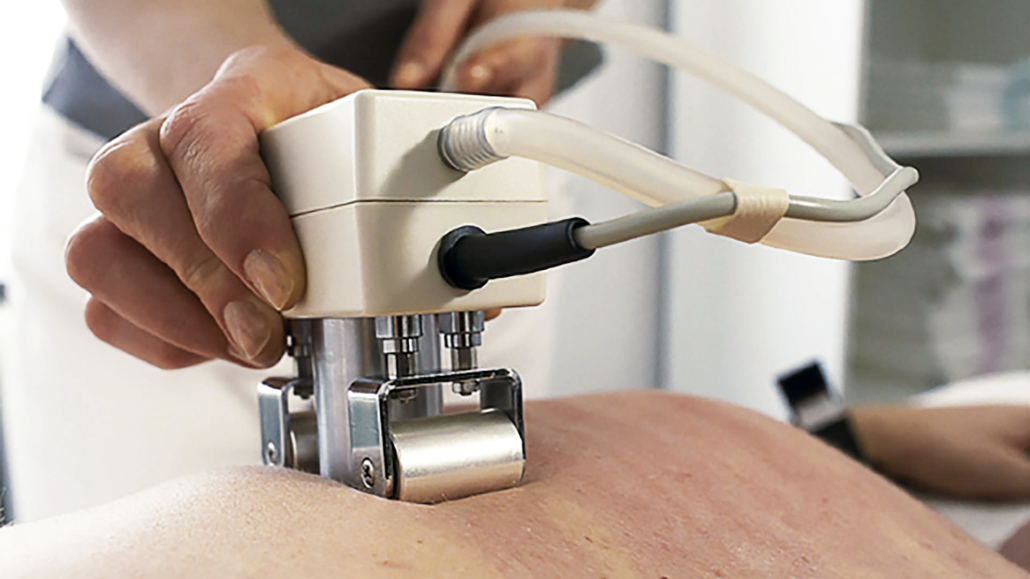
Petechial Vacuum Extraction Massage
Petechial Vacuum Extraction Massage is a modern form of cupping. In MRT, a partial vacuum is formed against the skin using a medical device that is rolled along the skin to draw toxins to the source and redirect them to the lymphatic capillaries. Michael Phelps utilized both cupping and petechial suction massage, and studies have suggested that this therapy may help reduce pain.
Direct Current Treatment of the Tissue
While the extraction massage occurs, a weak voltage current is conducted into the tissue using a roller electrode. Toxins in the body affect us both physically and energetically. For this reason, highly toxic individuals might show neuronal disorders and hormonal imbalances. This part of the therapy works to reverse the polarity of the tissue so that it becomes alkaline again, which is necessary for normal metabolic functioning to occur.
Bioresonance Therapy
The third part of MRT includes Bioresonance Therapy. This particular component aims to correct toxic, pathological frequencies that interfere with the central nervous system. Bioresonance Therapy works as biofeedback to the body and has been nicknamed “subtraction delete therapy” by Dr. Bodo Kohler, an expert in MRT.
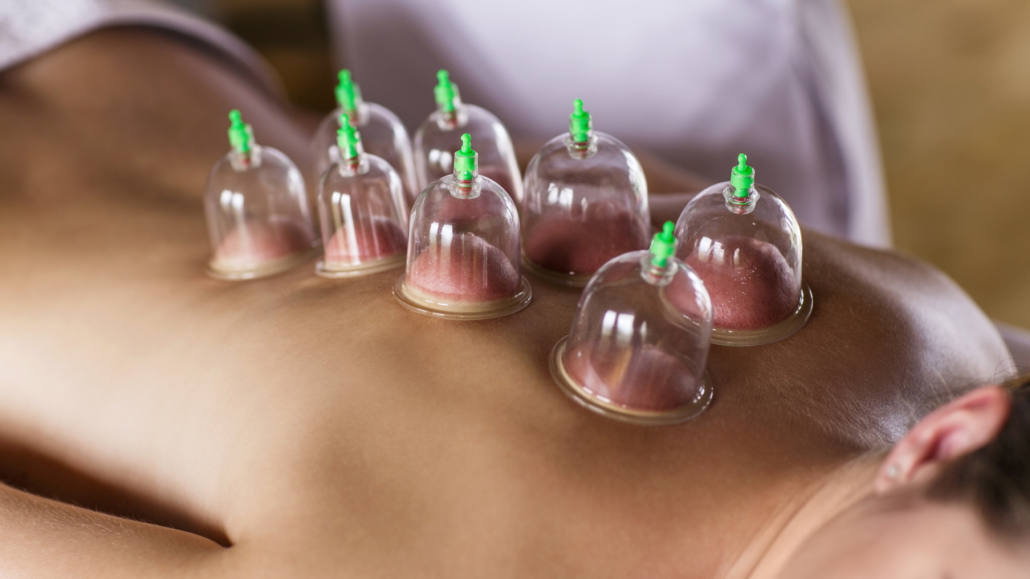
Balance and Flow
Health is dependent on balance and flow. Ancient Eastern healers, alchemists, herbalists, and doctors seemed to understand early on that the flow of Qi and equilibrium of yin and yang in the body determines the state of one’s health, wellbeing, and life span. Blockages, toxins, and pathogens in the body disrupt our natural flow and balance and lead to disease and discomfort.
Alternative therapies like cupping and MRT work to help restore balance and flow. Those ancient Egyptians, Taoists, and other cultures who practiced cupping thousands of years before it made its way to the Western world were definitely on to something!
Disclaimer: The statements made in this article have not been evaluated by the Food and Drug Administration. Any products or treatments mentioned are not intended to diagnose, treat, cure, or prevent any disease. Please consult a licensed medical practitioner for medical advice.
At Innovative Medicine, we believe in transparency. We want you to know that we may participate in affiliate advertising programs pertaining to products mentioned herein.
See how we can help you restore complete health of body, mind & spirit.
Join our mailing list and receive exclusive offers + information!


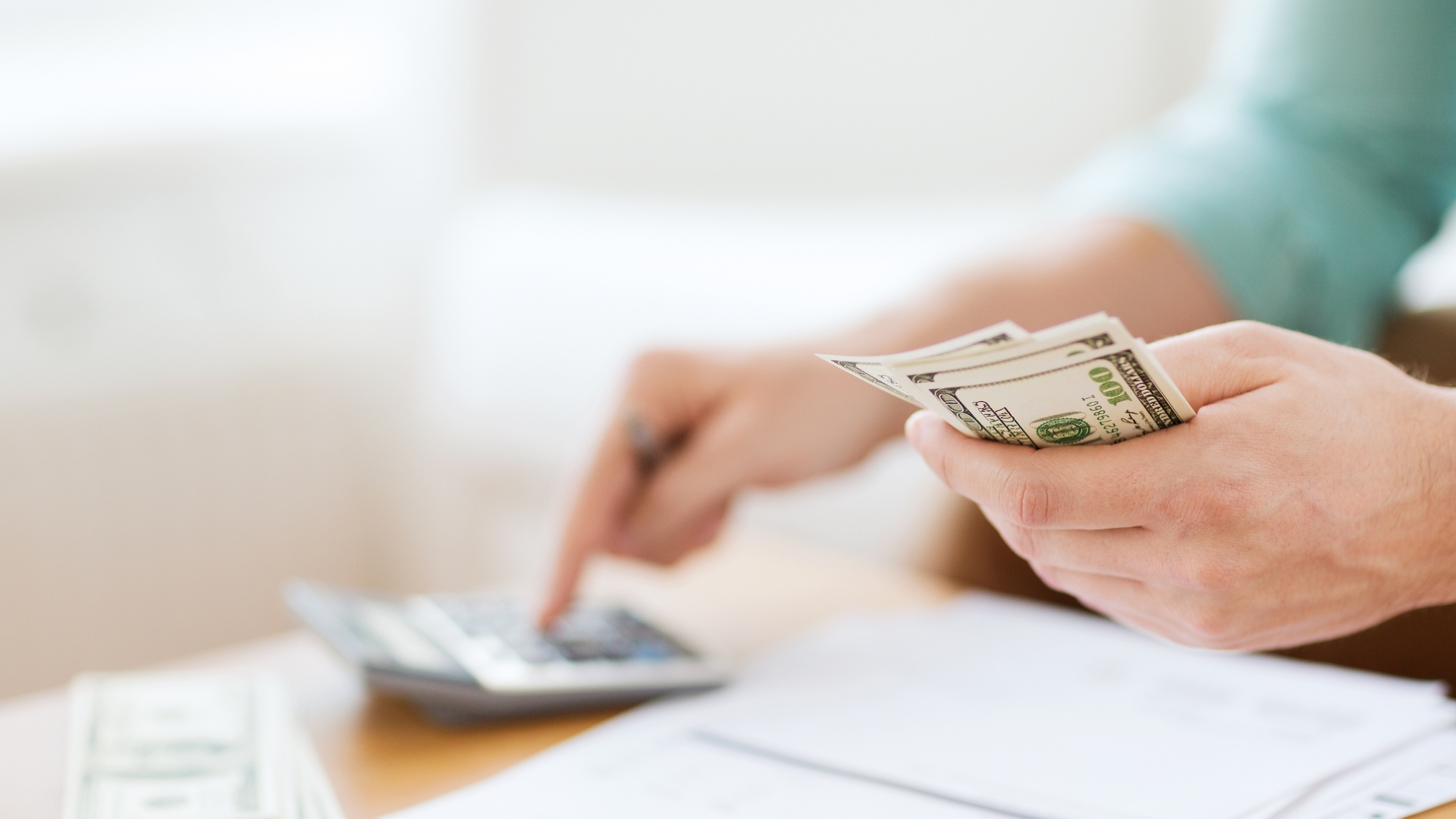

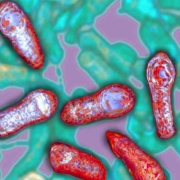
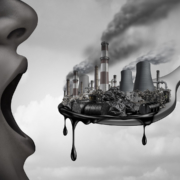
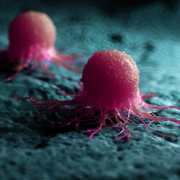
Leave a Reply
Want to join the discussion?Feel free to contribute!